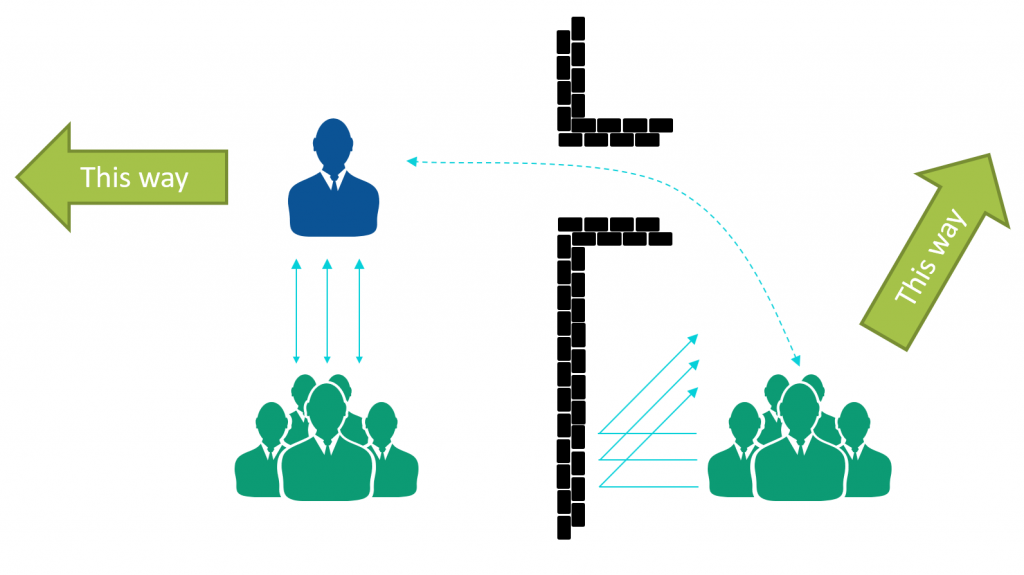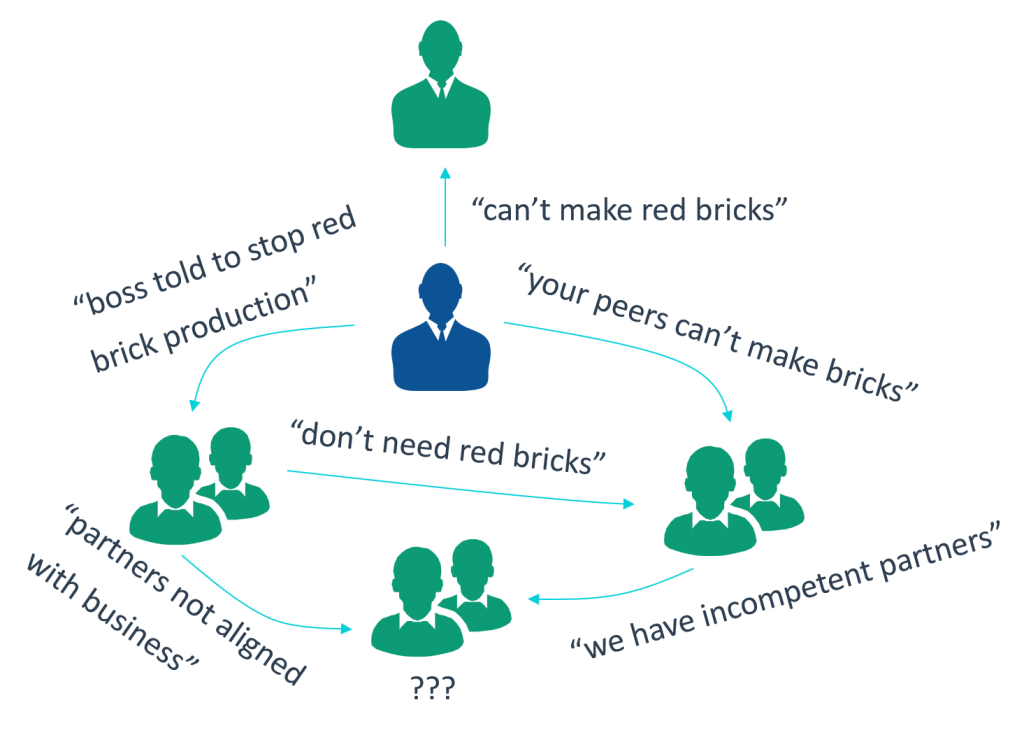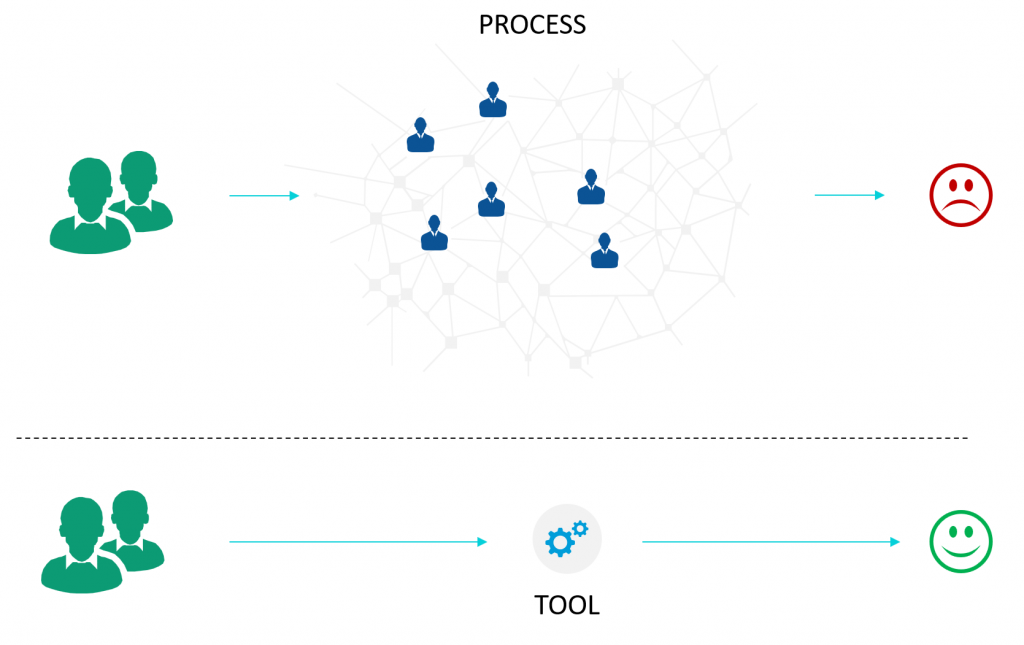There are so many ways to screw up a business and hiring the wrong people for the job is a distinct one. Organizations are comprised of people therefore organizational problems stem from the “wrong people on the bus”, as Jim Collins in Good to Great would call it. It takes attention to recognize a broken organization and tremendous courage to fix it. In this post, we will cover a few misaligned organizations I have seen in my career and talk about the ways they were rectified.

The ego
Most of the leaders are where they are because of their ego. It is extremely rare (but does happen once in a blue moon) for someone to be appointed a senior executive out of their selfless philanthropic aspirations. The ego does not make someone egocentric or narcissistic automatically. It can be a positive force when it comes hand-in-hand with competence and self-awareness. However, most organizational problems stem from the ego.
The foreboding czar
This kind of dysfunction occurs when a team or an organization is led by an individual who has taken exclusive control of all decisions and communication channels between his or her people and the rest of the business. This individual has created an environment in which people have to seek his or her opinion or approval for all things big and small. He or she can take the organization into any direction and none of his or her reports have any influence over it. The only options are – commit or leave. People can’t count on their peers to deliver because the czar changes team focus at his or her sole discretion. Within his or her group, there is an atmosphere of distrust because people advance in their careers by pleasing the czar, at the expense of integrity.

This is an extreme form of dysfunction that requires the intervention of higher power. If czar is a team lead, then his or her manager must take action. If czar is a group leader or executive – then a senior executive in his or her chain of command must take action. Sometimes it requires the action of multiple leaders in the chain of command if the czar is a known figure in the organization. If we’re talking about a CEO – board of directors. You get the point. There is no path to change his or her mind or heart either at his or her level or from within the organization.
If you are working for the czar who happens to run a private company – quit as soon as possible. The only remedy is a market force, which you can contribute to with your resignation.
The ballast
You might have worked with an individual that you can’t quite figure out what he or she is doing to earn a paycheck. Sometimes that individual may be “driving” an initiative by scheduling meetings. Other times he or she may be involved in decisions while contributing no input or being accountable for the outcome. That individual may be sending status updates or presenting project or team accomplishments. However, the slightest question scratching the surface is redirected to members of his or her team. I call these people the ballast. They have titles, earn a paycheck but bring zero value to the organization.
50% of the work is done by the square root of the total number of people who participate in the work.
Price’s law

The danger that ballasts represent is the inability to take the right action. When they are on the front lines or in the trenches, they may be causing harm with poor product design or sub-par customer support. If they are in a leadership position, they can be happy and smiling while their business is careening into the chasm. These people aren’t malicious intentionally, they simply do not engage and don’t know any better. Some of them lack the mental capacity to process the situation because someone put them in a position beyond their abilities. However, in some situations, they just don’t care. If the business flops, they will take their severance package and join another company.
The right course of action is to remove the ballast from the organization. If you are in the leadership position to do so – be on the look-out and take swift action. Keeping these people around is like riding a Yamaha R1 without any insurance. Not only you can’t predict where they will cause harm, but they also demoralize the team along the way.
If you have to collaborate with the ballast, refuse to do so and make it clear to your leadership why. Just like the human body has an immune system, so should the organization. Be the cytokine of your business and help coordinate the immune response.
The sleazy politician
It comes without saying that integrity is a foundation of a healthy organization. Unfortunately, even in modern days, you may come across an individual who really cares about his or her own standing above success of other people or the business. Politician wants everyone to like him. The distinctive trait of such an individual is the inconsistency of message when he or she talks to different audiences. You may recognize a politician when he or she tells you something that you know for a fact is not the case. You may hear conflicting messages coming from two people talking about the same subject when both of them obtained information from the politician.
If a politician runs an organization, it erodes trust and encourages triangulation. No one really knows the truth. People are discouraged from confronting the politician to pin the truth because it threatens to expose his or her web of deceit. When there’s a conflict within an organization run by a politician it will likely be preserved in the status quo. Direct feedback between members of his or her organization will disappear because people model their behavior after their leaders.

To deal with a politician you have to walk up the management chain as high as it takes to find integrity and expose the politician. Politician relies on general confusion and trust of his leadership to survive. To heal the organization, the politician must be removed. It requires a leader with integrity above the politician’s pay grade to take decisive action. If you can’t find a leader with integrity, then the entire leadership chain is encouraging the politician’s actions. You should leave this company. However, once you do find a leader willing to listen, make him or her aware that the exposed politician will retaliate. That leader must protect you.
The bureaucrat
The purpose of bureaucracy is to compensate for incompetence and lack of discipline – a problem that largely goes away if you have the right people in the first place. Most companies build their bureaucratic rules to manage the small percentage of wrong people on the bus, which in turn drives away the right people on the bus, which then increases the percentage of wrong people on the bus, which increases the need for more bureaucracy to compensate for incompetence and lack of discipline, which then further drives the right people away, and so forth.
Jim Collins
It is apparent without saying that bureaucratic organizations are highly inefficient. A mundane task that a lean startup can accomplish within 15 minutes, large companies can take days or even weeks to complete due to division of labor and responsibilities. Businesses should strive to replace every process with a self-service tool that connects every individual with his or her desired outcome directly. Unfortunately, not all businesses act on this advice. Some are obliviously creating a new process every week in response to a low probability even that took place on the fringe of the business.

At the helm of this bureaucratic pyramid sits the master bureaucrat. That individual isn’t evil, he or she just doesn’t know any better. He or she is a one-trick pony and will continue doing what he or she has always done. He or she will create new processes, review processes weekly, reprimand people for not following the process, demand more headcount to increase process throughput, etc. That individual will track KPI that measures the effectiveness of the process, the total paper burden that people on input or in the system have to endure, etc. Unfortunately, that individual will not see the process itself as a problem and try to eliminate it. He or she operates without trust and can’t afford a certain leap of faith that people will do the right things by themselves.
The danger bureaucracy represents is in pace and cost of innovation. The business will move slower and slower as people have to go through the approval process before they even start their task. A fun example – one of the teams I had the pleasure of working with, had a 4 week ramp-up time for new members. The permission acquisition process was so overwhelming and lengthy that for the whole month after joining the team, full of excitement and passion, people had to sit and wait.
The right course of action, as you might have already guessed by this point in the article, is the remove the bureaucrat. A fresh perspective is required to re-evaluate how the whole system operates. Someone without prior history or personal attachments to any decisions needs to be brought into the leadership role to shake the bureaucracy.

